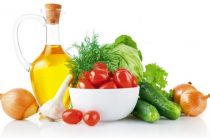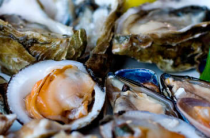Food allergy is an immune disorder, it is characterized by the sensitivity of the patient's body to certain components of food. Most often it manifests itself in childhood and is reversible. But in a number of episodes, food allergies can follow a person into adulthood. Its manifestations include an impressive list of symptoms: skin diseases, indigestion, various ailments and other unpleasant symptoms.
How do foods affect food allergies in adults?
And so, as we know in an adult, there may also be manifestations of an allergic reaction when a certain food is ingested. This happens due to the production of special antibodies by the immune system that affect the special cells of the patient's immune system.
 In general, this is a normal component of immune activity when antibodies resist viral, bacterial, toxic and other threats. But with allergic susceptibility in a patient, antibodies resist non-hazardous substances that are included in food. Why this happens is still a significant question for science. In most cases, this is due to poor heredity, which consists in the presence of an allergic disorder in the immediate family of the patient. However, this is not an unconditional factor in the formation of an allergic disease. A child can be born into a family of allergy sufferers, while not suffering from allergic diseases himself.
In general, this is a normal component of immune activity when antibodies resist viral, bacterial, toxic and other threats. But with allergic susceptibility in a patient, antibodies resist non-hazardous substances that are included in food. Why this happens is still a significant question for science. In most cases, this is due to poor heredity, which consists in the presence of an allergic disorder in the immediate family of the patient. However, this is not an unconditional factor in the formation of an allergic disease. A child can be born into a family of allergy sufferers, while not suffering from allergic diseases himself.
In order to show signs of a food allergy in an adult, the following conditions must be present. The patient must be inclined to produce antibodies in response to the penetration of food components into the blood. And of course, these components must be absorbed by the body, that is, penetrate into the gastrointestinal tract. Subsequently, the produced antibodies affect mast cells, which contain special substances responsible for the onset of allergy symptoms.
The variety of forms of food allergy in adults is determined by the fact that a wide variety of tissues in the body can have sensitivity to food allergens. If the skin is sensitive, then forms of food allergy include itching, rashes and irritation. With the passage of allergic processes in the digestive system, disturbances in the functioning of the gastrointestinal tract are noted. The sensitivity of the respiratory system is expressed by sneezing, sore throat, nasal congestion, allergic cough.
The most common food allergy reactions are provoked by the following food groups:
| seafood | crabs, shrimps, mussels, oysters, cod, fish roe, red fish |
| sweets | honey, chocolate, cocoa |
| nuts | all kinds, especially peanuts |
| berries | strawberries, raspberries, red and black currants |
| vegetables | tomatoes, carrots, celery |
| fruits | peaches, citrus |
| protein products | whole cow's milk, eggs |
What foods should be excluded?
Of course, a diet for food allergies in adults begins with the exclusion of foods that provoke an exacerbation of allergic diseases. But during the presence of allergic reactions, not only they are subject to exclusion. Why exclude foods that do not provoke allergic reactions? The explanation for this phenomenon is simple. Some foods contain histamine, which is a protein hormone needed by the body to cause allergic reactions. Therefore, in order not to lead to an intensification of the symptoms of already existing allergic reactions, these products must be removed from the diet for the duration of the exacerbation.
Mainly, these are products that are made using fermentation processes. These processes involve the processing by bacteria of the original food raw materials. In this way, the appearance of special savory tastes is achieved. Alas, not only the taste changes, but also the composition of these substances. Histamine is produced in complex biological reactions in some fermented foods. These are products from soybeans, as well as hard cheeses. A patient during an allergy attack is strictly forbidden to eat soy sauces, tofu (soy milk curd) and hard cheeses such as gouda, parmesan, cedar, brie, etc.
Another product that acquires histamine in its composition during processing is chocolate. And this means that you need to give up not just chocolate, but also numerous desserts, in which it is present. Also, a significant concentration of histamine is present in red wine, regardless of the grape variety and production characteristics (dry, sweet, semi-sweet, etc.). Also, a large amount of histamine is present in various canned foods, as well as in fish, spinach, pig liver, tomatoes, various marinades and semi-finished sausages.
The diet for food allergies in adults also implies the exclusion of alcohol and tobacco.
In addition to the general harmfulness of these products, they provoke vasodilation, which, during allergic processes, are already subject to expansion. The use of nicotine and alcohol in food allergies contributes to increased nasal congestion, redness of the eyes, as well as skin-inflammatory processes. Various spices and spicy foods (pepper, horseradish, mustard) can also increase allergic reactions, because they have an irritating effect on the mucous membrane, and in certain cases, the skin, which will lead to increased itching and inflammation. This means that they also need to be abandoned.
The right diet for food allergies
And so, a diet for food allergies in adults involves the exclusion of many healthy foods. This means that the body will not accept the appropriate amount of valuable substances if the diet is not adjusted to take into account these features.
What foods should be consumed during dietary procedures for food allergies in adults? It should be, first of all, healthy, natural and hypoallergenic food. In this case, it is unacceptable to use products containing synthetic components (various additives and preservatives), since they additionally irritate the patient's immune system. The basis of nutrition should be cereals (buckwheat, rice, oatmeal, pearl barley, etc.). They should be consumed in a minimally processed form, with a shell. The shell of the grains of these crops in high concentration contains vitamins, minerals and dietary fibers that improve the functioning of the gastrointestinal tract. But this body is primarily affected by food allergies.
Protein, iron and other valuable components can be obtained using fermented milk products, as well as lean meats (chicken breast, turkey, rabbit, veal, beef, lamb). These foods are also rich in vitamins and minerals.
Vegetables, fruits and greens such as cucumbers, beets, potatoes, parsley, dill, zucchini, cabbage, eaten fresh, contain fiber, vitamins, minerals and antioxidants in abundance. These healthy and non-allergenic products should be the basis of a diet for food allergies in adults at the time of attacks of the disease, as well as for a certain time after the elimination of symptoms.











